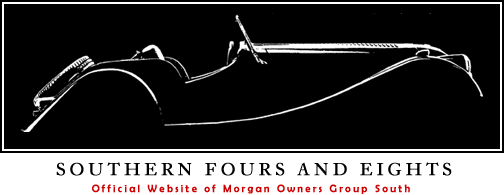Month: July 2019
-
A Day in the Life: Vince Wankling (Octane Magazine-Jul 2019)
Morgan’s Wooden body frames are still hand built, and this craftsman has been creating them since 1975 I DON’T HAVE to be in here at 7am but that’s when I arrive. I like to have a cup of coffee and a chat with the other lads before I start work. I’ve got my own corner…
-
Pittsburgh Vintage Grand Prix July 19 – 21, 2019 – ‘Report from the Field’
July 15th my wife Sam, our 2 Giant Schnauzers and I (Rick Frazee) started north on our 4 day journey to race our 1959 Morgan 4/4 at this year’s 37th Annual Pittsburg Vintage Grand Prix. Our trusty motor coach, Big Bird, had just come from the shop after having the rear bedroom slide and shower…
-
MCCDC’s MOG 49 ‘Report from the Field’
MOG 49 CHAIRMAN REPORT [Folks, this is Rich Fohl’s (MCCDC and MOGSouth member) report on the recent MCCDC MOG 49, held at the traditional Mimslyn Inn in Luray, VA. MCCDC will again use the Mimslyn to host MOG 50, next July 4th weekend, for their 50th Anniversary. This is a substantial milestone for MCCDC and…
-
1933 MORGAN SUPER SPORTS – MATCHLESS MORGAN (Autocar NZ – July 2019)
WHEN ALLAN DUFFY SEARCHED FOR A CAR THAT WAS OLDER THAN HE WAS, A 1933 MORGAN SUPER SPORTS THREE-WHEELER SEEMED TO MAKE THE MOST SENSE Once, all car companies were like the 110-year-old Morgan Motor Company, a small family-owned affair pumping out a few hundred cars each year. Yet while contemporary early 20th Century garage-land…
-
Morgan Plus 6
[Given that I have gotten a good number of questions relative to the Plus 6 lately. I thought I would post this overview video. It gives some details about the car. I am not sure if and when the car will make it to the US, and don’t expect it to be inexpensive. I suggest…
-
UK Traffic Accident
[This falls into the category of ‘what not to do!’ The good news is that the cockpit looks relatively intact. I haven’t heard the condition of the driver, but the car is totaled. Mark]
-
Morgan Plus Six 2019 review https://www.autocar.co.uk
What is it? Picture Britain’s typical family-owned and operated business. The sort that mothers and fathers pass on to their kids, or in which uncles, aunties and cousins all pitch in together. You’re imagining a chip shop, right? Just me? Perhaps a pub, a corner shop or a post office, then. Not a car factory, I’d…
